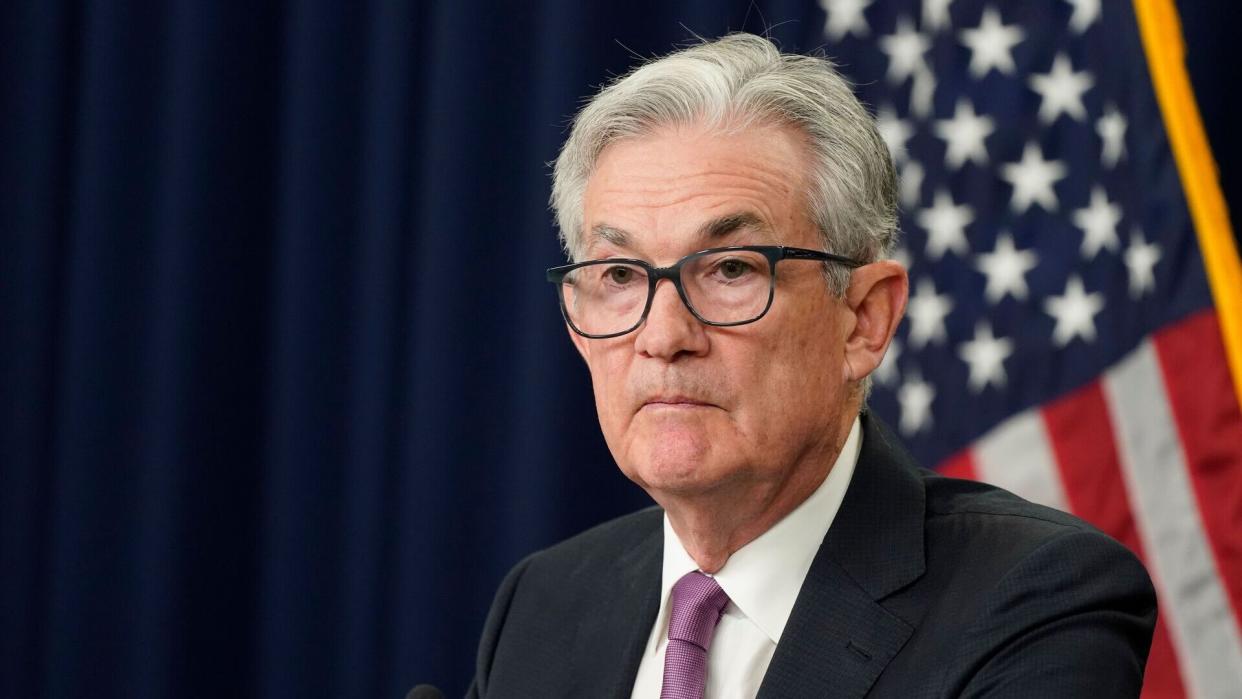Fed’s Powell Says Disinflationary Process Has Begun, but More Rate Hikes Needed

Just a few days following the Federal Reserve’s first meeting of 2023 and a surprisingly massive January job report, all eyes were on chair Jerome Powell’s Feb. 7 remarks.
See: Costco’s Best Deals? Employee Reveals 10 Standout Buys for Your Money
Learn: With a Recession Looming, Make These 3 Retirement Moves To Stay On Track
Powell, speaking at the Economic Club of Washington, said that the disinflationary process “has begun,” adding, however, that “it has a long way to go. These are the very early stages of disinflation.”
Commenting on the jobs report, he said it was “stronger than expected,” and that the process will take “a bit of time,” and will probably “be bumpy.” In turn, he said the Fed would need to hold policy at a restrictive level for “a period of time” and further rate hikes will be needed.
“Investors were encouraged by Fed Chair Powell’s comments, as the CBOE Volatility Index declined and bond yields slipped, while the equity markets rose, as he said that the process of reducing inflation is underway, adding that disinflationary forces have started, but still has a way to go,” said Sam Stovall, chief investment strategist at CFRA Research.
Stovall added that CFRA sees the FOMC raising rates two more times by 25 basis points each, ending in early Q2 at between 5.00%-5.25%.
Powell’s remarks also come on the heels of Minneapolis Federal Reserve President Neel Kashkari, who told CNBC that same day that the Fed has still work to do to tame inflation in light of the explosive job report.
“Neel Kashkari reminded investors that the Fed has a way to go before pausing. However, he has typically been quite hawkish,” said Stovall. “In the end, the data will decide when the Fed pauses and then when they start to cut rates.”
In January, the country added 517,000 jobs in January and the unemployment rate fell to 3.4%, according to the Bureau of Labor Statistics. In comparison, economists were expecting 185,000 job gains, according to CNN.
Chris Zaccarelli, CIO for Independent Advisor Alliance, said that while “off the charts” job numbers were great news for the economy, “it isn’t good news for the Fed or their inflation fight.”
“Paradoxically an even stronger economy than expected may turn out to be the worst thing for markets in the medium term, because it will cause the Fed to over-tighten and create even bigger problems down the road for markets, as interest rates go higher, and stay higher-for-longer,” he added.
Take Our Poll: What Are Your Financial Priorities in 2023?
On Feb.1, as was expected, the Federal Reserve dialed back its hike, unanimously stating it would raise interest rates by a quarter point for its first meeting of 2023. This was the eighth (and smallest) rate increase since March 2022, as GOBankingRates previously reported.
This latest, smallest hike followed December’s 50 bps hike and four consecutive 75 bps hikes. While this slowing down was welcomed, it didn’t quite represent a dovish pivot yet, as Fed officials said in a statement that “inflation has eased somewhat but remains elevated.”
More From GOBankingRates
This article originally appeared on GOBankingRates.com: Fed’s Powell Says Disinflationary Process Has Begun, but More Rate Hikes Needed

 Yahoo Movies
Yahoo Movies 
